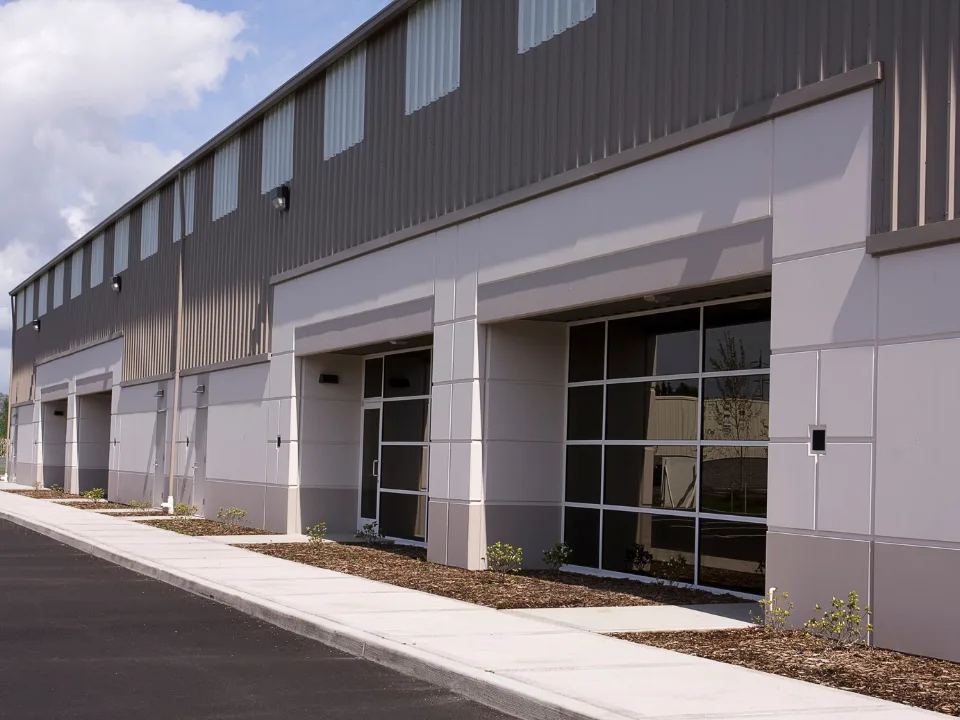Smaller warehouses are posting the sector’s lowest vacancy rates, even as larger facilities sit empty.
Changing consumer preferences and ongoing economic uncertainties have led to a surge in demand for smaller warehouse spaces across the country. The most recent data on the industrial market shows that smaller warehouses—those under 100,000 SF—continue to post the tightest vacancy rates within the sector, at 4.1%, according to a report from Cushman & Wakefield. Meanwhile, the largest facilities, those with properties exceeding 250,000 square feet, have experienced vacancy rates above 10% over the past few quarters.
Beyond just smaller footprints, many owners are choosing to lease out portions of warehouses to different tenants, a concept known as co-warehousing. As demand for co-warehousing has grown, so too has the need for a platform to easily search and find these kinds of spaces across the country.
Co-warehousing, explained
The concept of shared warehouse space is still relatively new in the United States. The term co-warehousing first began to emerge around 2019, driven by an uncertain economic and political climate that led to trade and tariff fluctuations, the exponential growth of e-commerce, and the increasing demand for last-mile distribution centers.
Like the office sector’s co-working segment, co-warehousing involves tenants sharing space. An alternative to traditional industrial warehouses, the concept allows multiple businesses to share a single warehouse while offering short-term and flexible lease options.
The co-warehousing sweetspot
Co-warehousing is designed for small and medium-sized companies that may have smaller space requirements than larger users and are seeking more affordable options. However, some major industrial users are also increasingly looking to downsize their footprints and maintain operational efficiency by taking smaller leases across multiple warehouses.
Co-warehousing spaces typically range in size from 200 to 5,000 square feet and are located within small-bay warehouse spaces, or those under 100,000 square feet. These properties are generally older facilities located closer to urban cores. Since the facilities are subdivided, many co-warehousing properties have diverse tenant bases, which tends to lead to solid cash flow.
Factors driving growth
Smaller warehouse spaces have surged in popularity since the COVID-19 pandemic. According to data from Newmark, 100 million square feet of small-bay industrial space was added to the market between 2020 and 2024.
The factors that initially fueled the rise of co-warehousing —namely, trade policy fluctuations and changing consumer preferences —continue to drive its growth today. Ongoing uncertainty over tariffs and their impact on supply chains further underscores the importance of flexibility for many warehouse users.
During a time when operational costs are rising, companies, both large and small, are seeking ways to cut costs and reduce the space they occupy. This increased attention to efficiency is drawing many companies to look at smaller spaces. At the same time, more companies are seeking to speed up delivery and reduce shipping costs by maintaining inventory in several smaller warehouses closer to customers, rather than keeping everything at one large, central facility.
Small industrial, big demand
Many small-bay warehouses are older buildings that, despite their age, perform well in the market. Owners of co-warehousing properties typically offer tenants flexible lease terms that allow businesses to scale up or down as needed, often allowing month-to-month or short-term options. These facilities often include amenities such as shared loading docks, conference rooms, community spaces, and even event spaces.
Smaller industrial properties have posted strong occupancy rates and increasing rents for years, as demand for these kinds of spaces is outpacing supply. Meanwhile, the development pipeline for properties of this size has been muted by high costs associated with building and acquiring land. But despite the challenges, some seasoned industrial developers are shifting toward building small-bay facilities. Institutional investors, such as BKM Capital Partners and Kayne Anderson Real Estate, have launched platforms to acquire and reposition smaller warehouse properties.
A smarter way to find industrial space
More companies than ever are looking for smaller warehouse spaces, but it can be challenging to get a clear picture of what is out there. Recently-launched firm WareCRE sought to fill that gap, creating what it calls a “one-stop shop” online platform connecting warehouse spaces to small businesses.
Who WareCRE Serves:
- Small business owners
- Property owners
- Co-warehousing brands
- Brokers
What Sets WareCRE Apart:
- Free listings
- Straightforward and easy-to-use platform
- Nationwide (U.S. and Canada) coverage
- Backed by industry experience
- 100+ listings and growing
WareCRE was founded by the team behind ReadySpaces, a leading co-warehousing brand that launched in 2019 and has since grown to nearly 40 locations and approximately 3,000 spaces nationwide. “We’re trying to create something that serves small businesses as a whole,” said Nick Gardiner, Founding Partner of WareCRE, on launching the listings site.
Explore co-warehousing listings across the U.S. or create your listing on the WareCRE platform.

















